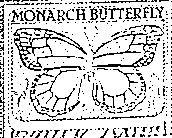
| A. | who | B. | whose | C. | whom | D. | which |
科目:高中英语 来源: 题型:选择题
| A. | with | B. | of | C. | over | D. | for |
查看答案和解析>>
科目:高中英语 来源: 题型:阅读理解
查看答案和解析>>
科目:高中英语 来源: 题型:填空题
查看答案和解析>>
科目:高中英语 来源: 题型:阅读理解
查看答案和解析>>
科目:高中英语 来源: 题型:选择题
| A. | when | B. | where | C. | how | D. | whether |
查看答案和解析>>
科目:高中英语 来源: 题型:选择题
| A. | used | B. | would use | C. | have been using | D. | had used |
查看答案和解析>>
科目:高中英语 来源: 题型:阅读理解
 On a recent trip to California,I stopped by Natural Bridges,where the monarch butterflies overwinter.Many years ago,I livedclose enough to it that I could walk there regularly and study their gatherings-the most memorable experiences when living in California,This visit,however,turned out to be disappointing.Though the way to the protected monarch garden looked just as I remembered it,I spotted only a few butterflies there.So I had to drive about a mile south to Lighthouse Field a more open area visited by large numbers of bikers,dog walkers and tourists.Many monarehs-at least several hundred-gathered in a small forest of pines there.Why had they moved to this less hospitable habitat-John Dayton,a biologist from San Jose provided an answer.During the 1990s,a deadly disease killed off most large pines sheltering the monarch habitats at Natural Bridges,forcing monarchs to seek shelter elsewhere.Still,since the mid-1990s,the number of overwintering monarchs in California has declined by nearly 90 percent.Butterfly populations at Santa Paula alone,for example,have dropped from about 120,000 to less than 1,000-the lowest figure in two decades.
On a recent trip to California,I stopped by Natural Bridges,where the monarch butterflies overwinter.Many years ago,I livedclose enough to it that I could walk there regularly and study their gatherings-the most memorable experiences when living in California,This visit,however,turned out to be disappointing.Though the way to the protected monarch garden looked just as I remembered it,I spotted only a few butterflies there.So I had to drive about a mile south to Lighthouse Field a more open area visited by large numbers of bikers,dog walkers and tourists.Many monarehs-at least several hundred-gathered in a small forest of pines there.Why had they moved to this less hospitable habitat-John Dayton,a biologist from San Jose provided an answer.During the 1990s,a deadly disease killed off most large pines sheltering the monarch habitats at Natural Bridges,forcing monarchs to seek shelter elsewhere.Still,since the mid-1990s,the number of overwintering monarchs in California has declined by nearly 90 percent.Butterfly populations at Santa Paula alone,for example,have dropped from about 120,000 to less than 1,000-the lowest figure in two decades.
查看答案和解析>>
科目:高中英语 来源: 题型:短文改错
查看答案和解析>>
湖北省互联网违法和不良信息举报平台 | 网上有害信息举报专区 | 电信诈骗举报专区 | 涉历史虚无主义有害信息举报专区 | 涉企侵权举报专区
违法和不良信息举报电话:027-86699610 举报邮箱:58377363@163.com